*This post was co-authored by Emily York and Shannon Conley*
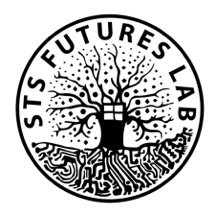
In 2017, we established the STS Futures Lab—a space to critically interrogate plausible sociotechnical futures and to develop strategies for integrating pedagogy and research. But why a lab, and why a ‘futures’ lab?
In a broader societal context in which futures thinking and futures labs are often subsumed within innovation speak, entrepreneurialism, and implicit bias regarding whose futures matter, it might seem counter-intuitive to establish a futures lab as a space for critical pedagogies. And yet, it is precisely because of our concern with the politics and ethics of technological world-making that we are inspired to intervene in this space.
A futures lab, as we conceive it, is a space to cultivate capacities for critical and moral imagination that serve to check dominant assumptions about the future.
“In the marketplace, the word creativity has come to mean the generation of ideas applicable to practical strategies to make larger profits…. I don’t use it any more, yielding it to capitalists and academics to abuse as they like. But they can’t have imagination.” (Ursula K. Le Guin, “The Operating Instructions”)
We believe STS pedagogies are at their best when they are at the same time critical pedagogies—connected to the politics of knowledge production (Freire, 2018), and congruent with education as a ‘practice of freedom’ (hooks 1994, 4). Moreover, STS understandings of the messiness of knowledge production align well with reflexive practices of learning with our students in the classroom. However, to develop critical STS pedagogies that effectively engage our students, we have to start where we are in terms of our particular location and the students with whom we are working.
The STS Futures Lab is an example of how critical STS pedagogies can, and perhaps must, emerge as a situated practice. One of the factors that makes STS pedagogies such a rich and varied set of practices is that they are developed and implemented in a wide array of disciplinary, institutional, and geographically diverse spaces, often heavily shaped by these spaces as faculty attempt to make material relevant to their students and aligned with learning objectives. This is to say, the very factors that constrain approaches to implementing critical STS pedagogies also constitute an opportunity.
A Situated Practice
We are ‘social contexts’ faculty in an undergraduate applied science program within a college of engineering at a primarily undergraduate public institution in the Shenandoah Valley of Virginia. STEM students here are excited about technology and the future, and about using technology to solve problems. We need to address program-defined learning objectives, such as analyzing the relationships between technology and society, applying ethical reasoning, and describing the mechanisms of technology governance. And we want to address questions of justice pertaining to science and technology. Making this engaging requires creativity and a little STS “strategery.” We want students’ enthusiasm about technology to become fascination with the complexity of technology in society, and the future to become multiple, contingent futures. We want them to recognize and assess underlying values and assumptions that inform technological world-making, recognize power dynamics, examine technological failures, and always be asking: Who and what might not benefit? In other words, we want to insert the critical lens of STS into STEM thinking, forming an STS-inflected habit of mind that students carry with them beyond the classroom into their careers and lives as citizens.
It was our students who first inspired us to establish a lab. They would often ask us if we had a lab when they were searching for faculty advisors for their senior capstone projects. As social contexts faculty, we didn’t, but their inquiries inspired us to consider: What would an STS lab look like? And why shouldn’t we have one? Subsequently, after working closely with a couple of our students to develop a 4S presentation in 2017, we learned they were referring to our meetings as the ‘STS lab’—contrasting it with their meetings with our colleagues in the ‘TNS lab’ (telecom, networking, and security). This spurred us to action.
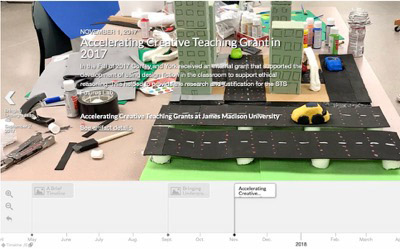
A brief history of the lab (access interactive timeline essay hosted on the STS Infrastructures platform), with key events and documents, including our space proposal.
By fall of 2019, we had a dedicated space, funding to develop interactive labs in our space, and an ongoing research project—Co-Imagining Futures—that integrates undergraduate students in engaging experts across disciplinary boundaries. And, at the recent 2019 4S meeting in New Orleans, six of our students—all applied science majors—traveled with us to present their original, independent research conducted in the lab. Their research topics included the role of technology in human trafficking, narratives of energy transition in Appalachian Virginia, security and surveillance in autonomous vehicles, and green infrastructures.
The lab, then, exemplifies ways that STS critical pedagogies emerge in response to the specific constraints and opportunities of their context—in this case, that includes working with applied science students in an interdisciplinary major; working in a science & engineering space in which future thinking, labs, and ‘hands-on’ learning are common; and working in a teaching-oriented, predominantly undergraduate institution in which it can be difficult to pursue research that is entirely separate from undergraduate teaching. These contextual elements blend with our teaching and research interests—including our desire to incorporate perspectives from feminist and postcolonial STS and disability studies, and our interests in STS methodologies, expertise, and technology governance. In what follows, we briefly elaborate on how these constraints, opportunities, and interests have merged as we attempt to bridge pedagogy and research in the lab.
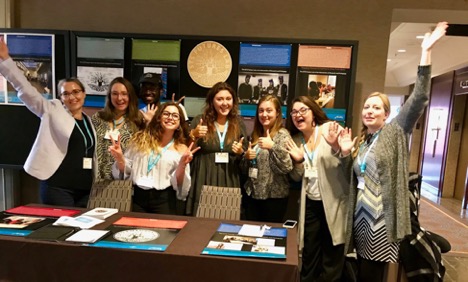
Bringing undergraduate applied science students to present their own STS research at 4S 2019 in New Orleans.
Creative Anticipatory Ethical Reasoning (CAER)
In the STS Futures Lab, what initially developed as a pedagogical strategy in the classroom has developed into a research methodology, and our teaching and research have begun to merge. In the classroom, we wanted to challenge technological determinism, make visible the societal dimensions of technology, attend to questions of justice, develop critical and moral imaginative capacities, and engage ethical reasoning as a creative process fundamental to making and doing science and technology.
We began to blend aspects of scenario analysis, design fiction, and various ethical frameworks into an approach we call Creative Anticipatory Ethical Reasoning, or CAER (York and Conley, 2019). Scenario analysis is a semi-structured method of analyzing the ways that different social, political, economic, environmental, and legal factors may plausibly shape a particular trajectory (see, for example, Selin et al., 2015). It is intended to support planning, but we appropriate it here to support critical thinking with respect to sociotechnical trajectories. Design fiction incorporates speculative fiction and prototyping, juxtaposing materials and narrative to visualize and start conversations about a particular scenario (Bleecker, 2009). We use it not to imagine a future technology necessarily but, drawing on Langdon Winner (1986), to imagine forms of life that might materialize. We then employ various ethical approaches to interrogate these design fictions as a way of grappling with the moral dimensions of technological world-making. These detours into plausible futures become ways of re-interrogating the present, including the values and assumptions that might be at work in the hype surrounding a particular technology.
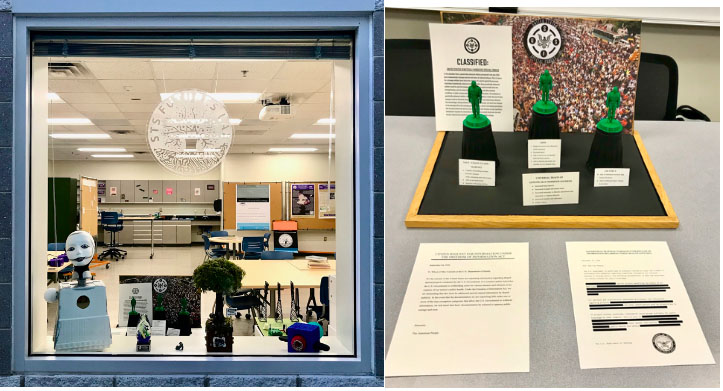
Design fiction to develop critical and moral imagination. On the right, students are imagining a future use of genetic engineering in the military.
Co-Imagining Futures Across Disciplines
Inspired by the notion of critical participation in STS (Downey and Zuiderent-Jerak, 2017), we began to consider whether CAER might also work as a reflexive mode of engaging scientists and engineers in our research. We each had previous experience being embedded in labs, interviewing scientists and engineers, and attempting to practice STS interventions, and had felt frustration at the challenges and limitations of approaching such work as the ‘social’ or ‘ethical’ scholar structurally positioned as an outsider. Critical participation posited that critique and participation could work together to foster a collaborative and reflexive exchange among different actors.
We decided to invite experts from different disciplines to join us in a CAER workshop to assess whether CAER might constitute a set of interactional resources that could facilitate productive conversation and mutual learning across disciplinary boundaries.
A Co-Imagining workshop with Dr. Morgan Benton on gender parity in IT education (video montage created by JMU Innovation Services, click to watch video)
Initially, we invited our Futures Lab students to join us in these workshops for their educational benefit. However, after the first workshop, we realized that our students were important mediators between experts from different disciplines. When experts (including us) questioned, reframed, or even disagreed with each other, it often occurred through dialogue with the students. Additionally, their presence encouraged experts to use accessible language—which improved cross-disciplinary understanding between experts. And the pedagogical aspect of the workshop structurally placed experts on the same side, highlighting their shared interest in teaching rather than their disciplinary differences. Students were integral to the process.
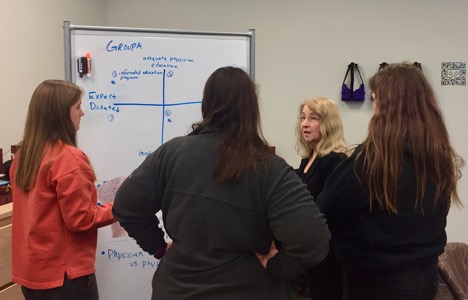
Futures Lab students engaging with Dr. Anne Henriksen on precision medicine in a Co-Imagining Futures workshop.
While this project is new, we are excited to expand it. Our first three workshops have engaged an expert in computing on the topic of IT education and gender parity, an expert in biotechnology on implementing precision medicine, and an expert in geography on infrastructure in Nepal. We have had the opportunity to disseminate this work through a number of venues, such as the 2019 Studies of Experience and Expertise meeting in Helsinki, and through a co-authored article with our invited expert and student lab members in a practitioners’ journal on imagining futures of precision medicine.
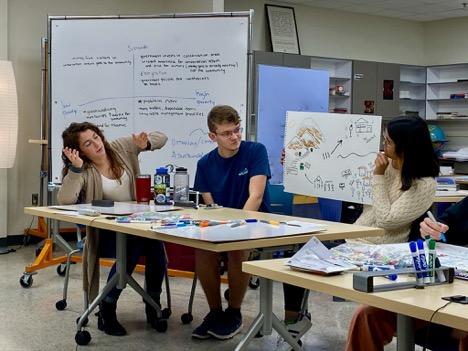
Futures Lab students present a design fiction prototype in our Co-Imagining Futures workshop with Dr. Galen Murton on the politics of infrastructure in Nepal, considering how money from ecotourism may or may not funnel back to local communities.
Thinking about the how to develop STS critical pedagogies and to integrate pedagogy and research has inspired us to help foster a global community of practitioners interested in these topics. We have recently received a National Science Foundation workshop grant to host an “STS as a Critical Pedagogy” workshop in July 2020. For more information on how to get involved in STS Pedagogy, follow us on Twitter at @STSpedagogy and join the STS Pedagogy Listserv.
References
Bleecker, Julian. 2009. “Design Fiction: A Short Essay on Design, Science, Fact and Fiction.” Near Future Laboratory, no. March: 49. http://www.nearfuturelaboratory.com/2009/03/17/design-fiction-a-short-essay-on-design-science-fact-and-fiction/.
Downey, Gary Lee, and Teun Zuiderent-Jerak. 2017. “Making and Doing: Engagement and Reflexive Learning in STS.” In The Handbook of Science and Technology Studies., edited by Ulrike Felt, Rayvon Fouché, Clark A Miller, and Laurel Smith-Doerr, 4th ed., 223–51. Cambridge: Cambridge, Massachusetts : The MIT Press.
Freire, Paulo, Myra Bergman Ramos, Donaldo P Macedo, and Ira Shor. 2018. Pedagogy of the Oppressed.New York : Bloomsbury Academic.
hooks, bell. 1994. Teaching to Transgress : Education as the Practice of Freedom. New York : Routledge.
Guin, Ursula K Le. 2004. The Wave in the Mind : Talks and Essays on the Writer, the Reader, and the Imagination. 1st ed. Boston New York: Shambhala ; Distributed in the United States by Random House.
Selin, Cynthia, Lucy Kimbell, Rafael Ramirez, and Yasser Bhatti. 2015. “Scenarios and Design: Scoping the Dialogue Space.” Futures 74: 4–17. https://doi.org/10.1016/j.futures.2015.06.002.
Winner, Langdon. 1986. The Whale and the Reactor : A Search for Limits in an Age of High Technology. Chicago: University of Chicago Press.
York, Emily and Shannon Conley. 2019. “Creative Anticipatory Ethical Reasoning with Scenario Analysis and Design Fiction.” Manuscript submitted, under review.
